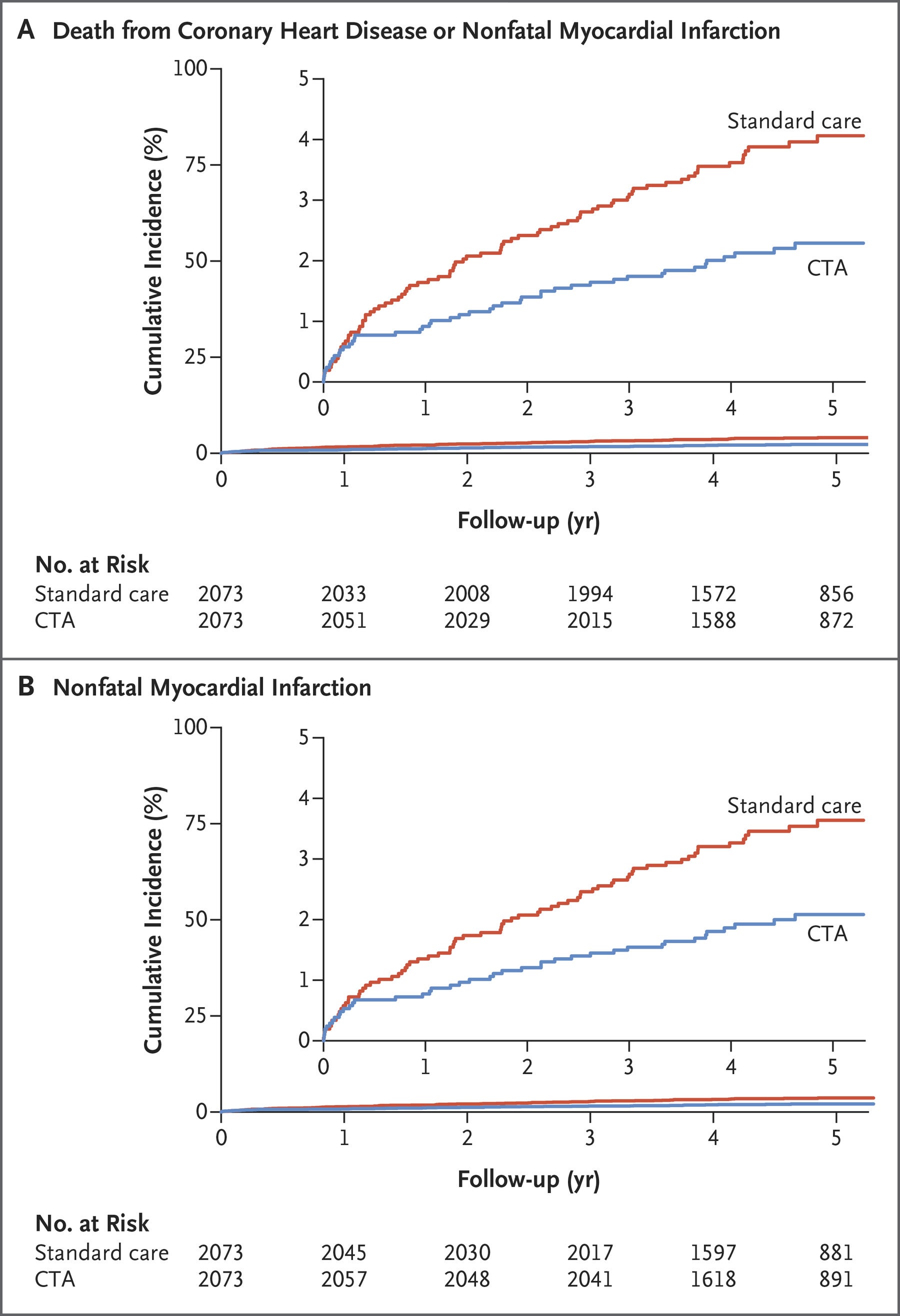
Study shows CTCA scan leads to better outcomes for patients with chest pain
Study shows CTCA scan leads to better outcomes for patients with chest pain

In September last year the five-year clinical outcomes of a trial known widely as the SCOT-HEART trial (the Scottish Computed Tomography of the Heart trial) were published, with findings that showed that the use of CTCA, with consequent changes in treatment, resulted in a “significantly lower rate of death from coronary heart disease or nonfatal myocardial infarction than standard care alone.”
Professor David Newby, one of the authors of the study, was recently interviewed on the ABC’s Health Report, with Norman Swan.
“We are investigating patients who are referred by their primary care doctor to a cardiologist for an opinion – do they have coronary heart disease or not?” said Professor Newby.
“Over five years what we saw was that you could halve the number of people having a heart attack by doing a CT angiogram.
“We could see that patients who were diagnosed with a CTCA scan were more likely to be on a statin, more likely to be on an aspirin, were more likely to get treated early, correctly.
“And that treatment early on then had an impact over the following five years. You were less likely, then, to have a heart attack or need further treatment.
“We don’t actually know why, but one of the things that has crossed our mind is that maybe people are more committed to stopping smoking, to eating a healthy diet, to exercise, if they know that they’ve got heart disease.”
The findings of the study highlight the importance of promptly and accurately identifying the presence of coronary heart disease.
Listen to Professor Newby’s interview here
Read the full SCOT-HEART Investigators article here

Cumulative Incidence of Death from Coronary Heart Disease or Nonfatal Myocardial Infarction.
Panel A shows cumulative event curves for the primary end point of death from coronary heart disease or nonfatal myocardial infarction among patients assigned to CTA in addition to standard care and those assigned to standard care alone. Panel B shows the cumulative risk of nonfatal myocardial infarction in each group. The inset in each panel shows the same data on an enlarged y axis.
Source: Coronary CT Angiography and 5-Year Risk of Myocardial Infarction The SCOT-HEART Investigators* September 6, 2018 N Engl J Med 2018; 379:924-933 DOI: 10.1056/NEJMoa1805971
